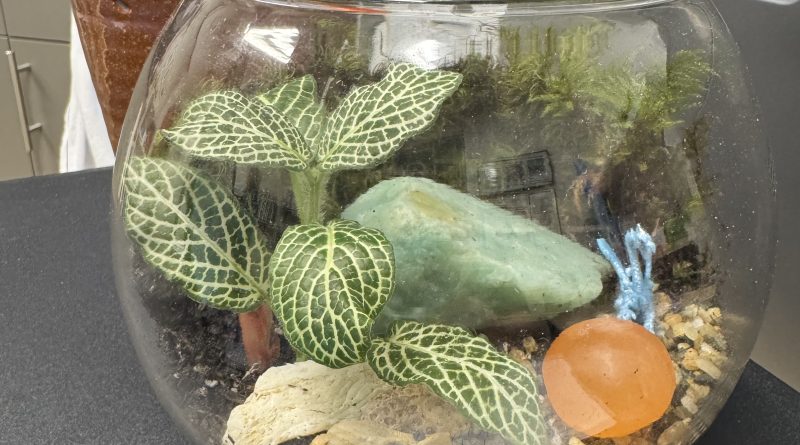The Healing Power of Nature
Recently, I took a class with friends where we made small moss terrariums. Preparing the terrarium involved getting my hands dirty using clay, soil, dried plant materials, fresh plants and stone. For someone who doesn’t garden or keep houseplants, this was a refreshing break from my usual routine. It also came shortly after one of my patients described her experience hiking the Appalachian Trail during a course on nature immersion therapy. These two experiences inspired this month’s article on the many ways connecting with nature can promote health and healing.
One of the six guiding philosophies of naturopathic medicine is Vis Medicatrix Naturae, often translated as “the healing power of nature.” This philosophy has multiple facets. Yes, it can involve using natural substances, but it also means supporting the body’s innate healing mechanisms. For today’s purposes, though, it encourages us to consider how the natural world can contribute to our healing. Many cultures and thinkers emphasize that humans are not separate from nature. However, for those of us living in cities and spending much of our time on screens, a sense of disconnect can develop. Reconnecting with nature—even through small acts like making a terrarium—can be beneficial.
Research supports the healing impact of nature exposure. Studies on forest bathing, for instance, reveal a measurable increase in natural killer (NK) cells, immune cells that combat viral infections and even cancer. Gardening is associated with cardiovascular benefits; gardeners have lower rates of heart attack, stroke, diabetes, high cholesterol, and high blood pressure. Additional benefits of nature exposure include reduced stress, improved mood (with less anxiety and depression), better focus and decision-making, and healthier body weight. Gardening can also help prevent age-related muscle loss (sarcopenia) and is a beneficial activity for elders with dementia. In fact, gardening is one of the common habits among centenarians in the “Blue Zones,” areas known for longevity.
Some of these benefits can be enjoyed even by looking at images of nature, but the greatest effects come from physically being in nature. For example, increases in NK cells are linked to inhaling compounds trees release into forest air. Other benefits come from panoramic vision—literally looking up and out, unlike the close-up focus we use with screens. And as emerging research into the microbiome grows, we will likely see evidence that close contact with natural environments can improve our body’s health through microbial exposure.
As we enter the rainy winter season here in the Pacific Northwest, our contact with nature may diminish at a time when we need it most. Shorter days, colder temperatures, and limited sunlight can all affect mood and energy, making it especially important to find ways to stay connected to the natural world. Consider gearing up in your best waterproof clothing for a brisk walk outside, where even a brief exposure to natural light and fresh air can lift your spirits. Alternatively, try indoor gardening to bring a bit of greenery indoors, even on the small scale of a terrarium, to help stay engaged with the healing presence of nature throughout the winter months.
This article was originally published in Tigard Life‘s March 2024 issue. Click here for a PDF of this article in it’s original format.

